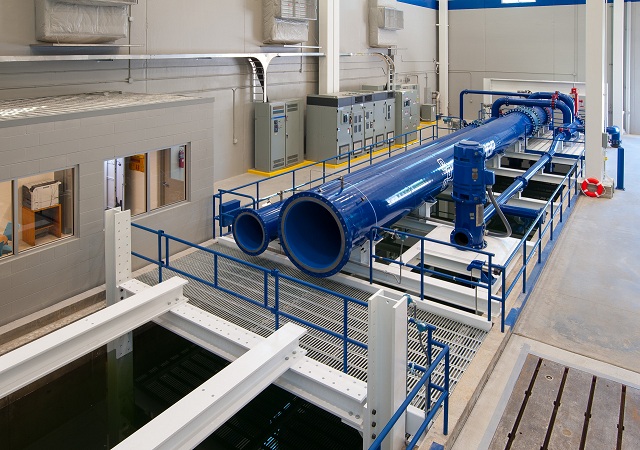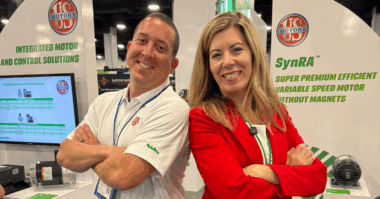When I was at the Hydraulic Institute meeting earlier this year, I had the pleasure of speaking with Jim Aubrey, Manager of Engineering at Rotating Equipment Repair Inc. RER has provided pump repair and field services since 1982 for power generating companies across the Midwest, and is now offering pump performance testing with their newly-built test loop. Since there are only a handful of non-OEM pump testing facilities in the United States, I just had to learn more about the new RER Test Loop.
Q: Why did RER decide to build a test loop?
Jim: I’ve been with RER for 5 years now, primarily providing engineering support internally to rebuild pumps, and we felt it was important to have a way to test the pumps we repair. We wanted to give our customers the added confidence of knowing their refurbished pump is going to work in their pumping system the way it’s supposed to. Especially in the case of the nuclear safety-related pumps we rebuild – all those pumps require performance testing before we ship them back to the power plant.
We also perform rerates for pump owners in the oil and gas industry, so when we manufacture new impellers, increase diameters, or trim impellers, things like that, we want to test those pumps to show that the rerate was successful.
We also act as a third-party test lab for OEMs. Typically, pump manufacturers are so busy testing their newly manufactured pumps or new products in development, that they rarely have the capacity to test repaired or refurbished pumps. Overall, we wanted to create an option for anyone who might need to test a pump, whether that is a vertical pump or a horizontal pump.
Q: What was it like to design a test loop?
Jim: We started designing the test loop in June of 2015, and the design through build process went pretty smoothly. It’s a completely custom test loop that was actually part of a 50,000 sq. ft. manufacturing addition to our service center. Everything went as planned and our new pump performance testing capabilities are really going to add value to a lot of pump owners and operators.
Q: What is your pump testing capability?
Our pump test loop has a flow capacity up to 162,000 GPM, so we can test very large pumps that operate in most pump applications. Our reservoir holds over 330,000 gallons of water, and all of our pipes, flanges, and instrumentation on both the 24″ and 42″ vertical pump lines are rated to 150 PSI (pounds per square inch). We have 480-volt and 4,160-volt variable speed drives, which are really the work horses of our test loop. The 480v drive can power motors up to 700 HP, while our 4,160v drive can deliver power up to about 3000 HP. So, again, we can test very large pumps, using our 50-ton overhead crane, there’s not much we can’t do.
One of the cool features of our test loop is that our piping can be custom-configured for every test so that we can do our best to simulate the environment that the pump operates in on a normal basis. Testing a pump in a lab is often quite different than the pump operating at the plant, so trying to replicate the pumping system that the pump typically operates in helps to obtain more accurate and relevant performance testing data.
Q: What do you ‘measure’ and why is it important?
We measure pressure, temperature, flow, RPM and Torque at various points on our test loop. Pressure and flow measurements allow us to create the classic TDH vs Flow curve that end users are accustomed to looking at when selecting a pump to use within their system. An accurate temperature measurement tells us what the vapor pressure of the water is. This measurement is critical in determining the NPSHR for a pump. NPSHR is one of the most important pump performance characteristics as it tells a user exactly how much suction pressure they must supply to the inlet of their pump.
We measure pressure with Rosemount 2051T pressure transmitters, temperature with Rosemount 644 temperature transmitters, RPM/Torque with Himmelstein torque flanges and flow with Rosemount 8700 magnetic flow sensors. Our 42” flow sensor is one of the largest ever made by Rosemount/Emerson. All of these instruments are calibrated per our 10CFR 50 Appendix B quality assurance program for the testing of nuclear safety related pumps.
To learn more about performance testing at RER, please visit RERpump.com/test or contact Jim Aubrey at E: jra@rerpump.com O: (262)820-2525




